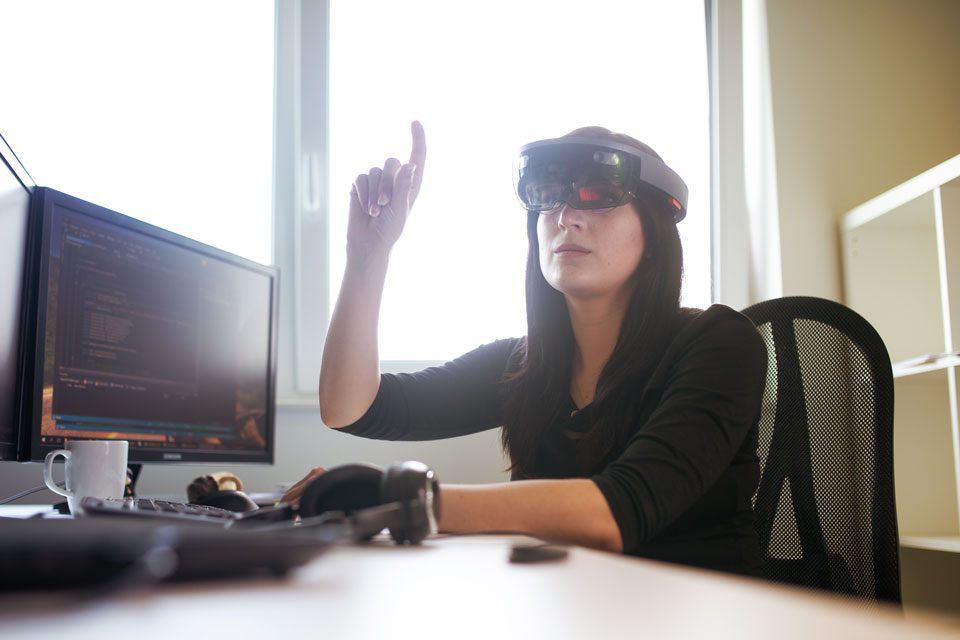Relevant information in your field of view
Augmented reality systems and their differences
AR glasses augment the perceived reality of their users with information via light displays in the users’ view. An AR system must be hands-free to enable AR support even when the user is actively performing tasks with their hands. Different manufacturers of smart glasses are pursuing different approaches in order to best meet this requirement. While many choose a design resembling classic eyewear, others are specifically designed for the use with safety helmets or for integration with other devices.
Some manufacturers integrate non-optical control components into the headset while others move these system components to a connected controller, PC or smartphone. Furthermore, smart glasses differ according to which platform they run on. Google’s operating system Android currently dominates the market of AR glasses. Other operating systems for data glasses are Windows and Linux.


